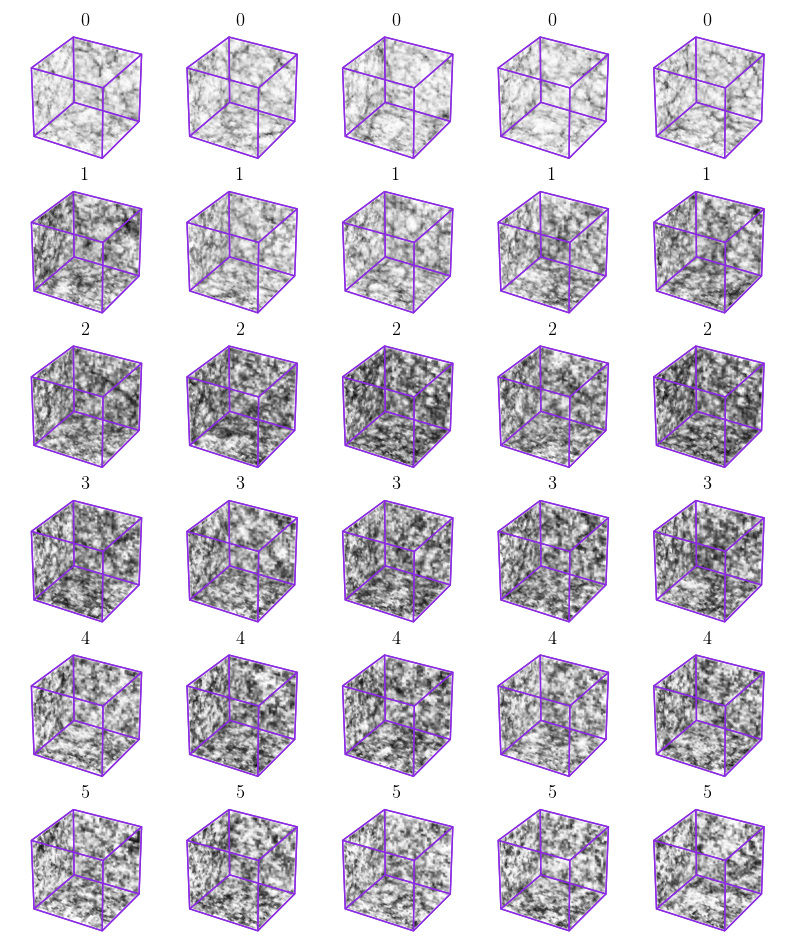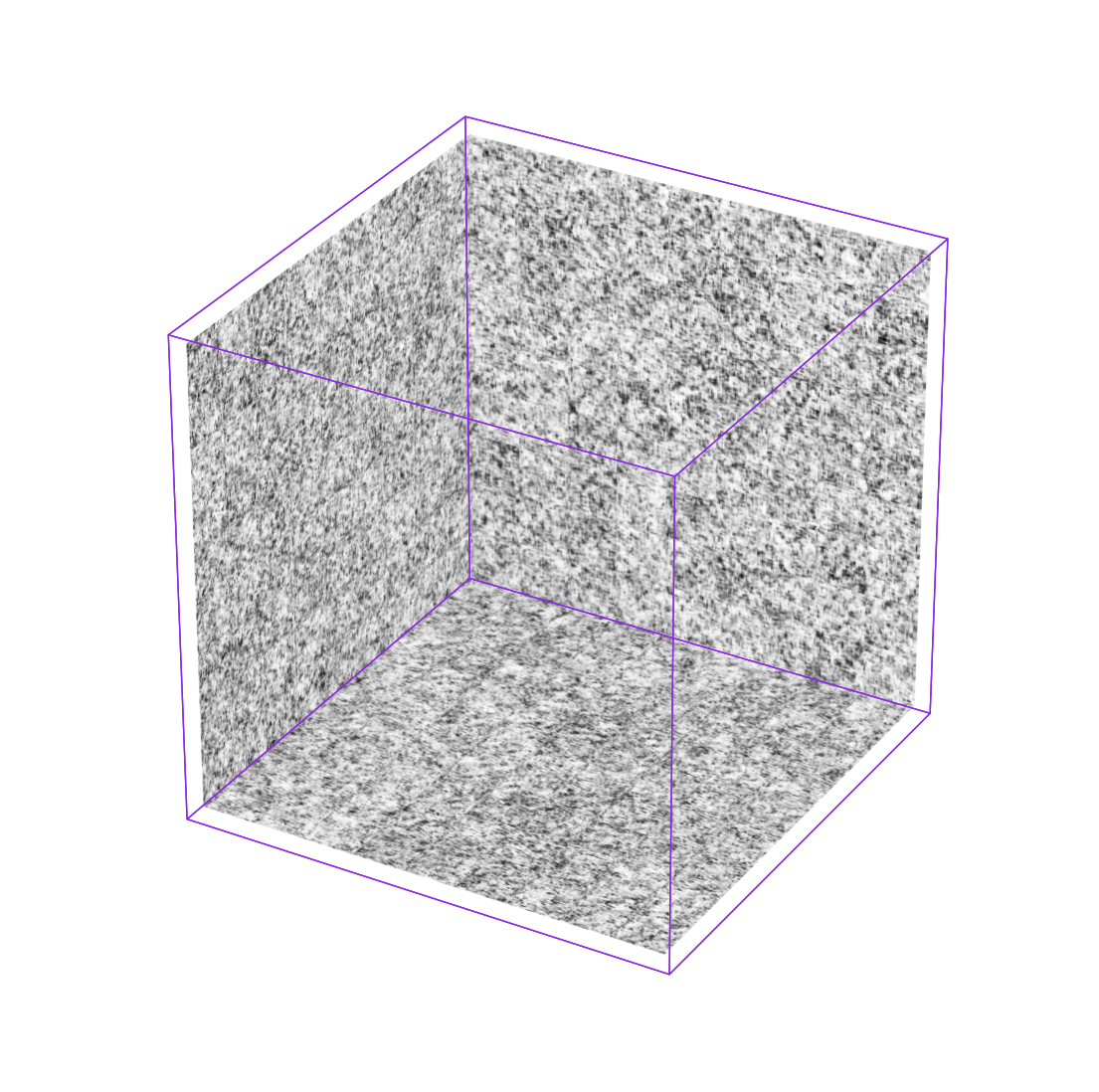MSci project supervised by Prof. Martin Hendry and Dr. Chris Messenger.
How can we generate an endless volume of space with all the richness of computer simulations like The Millennium Project (Springel et al. 2005)?
One approach is to utilise GANs (Goodfellow et al. 2014) to shape the capacity of a generative framework toward mimicking the distribution over a set of objects.
The next step is to condition the latent-vector input to the GAN generator model - this means one can create a generator that is able to create samples at different redshifts; see here 3D-ACGAN.
This implementation uses the Auxiliary Classifier Generative Adversarial Network (Odena et al. 2016).
Galaxy distribution samples from the Millenium Simulation (Springel et al. 2005).

With the artificial cube samples, one can piece them together to create larger volumes of generated cosmic web. Here is a box generated out of 1729 generated cubes, at over double the size of the original simulation volume.
